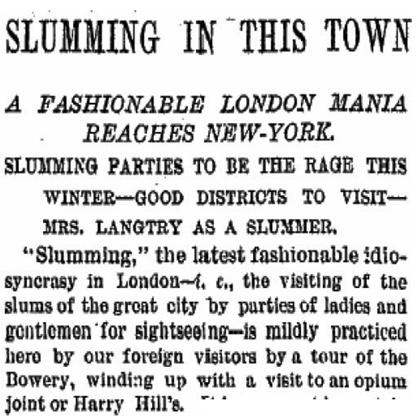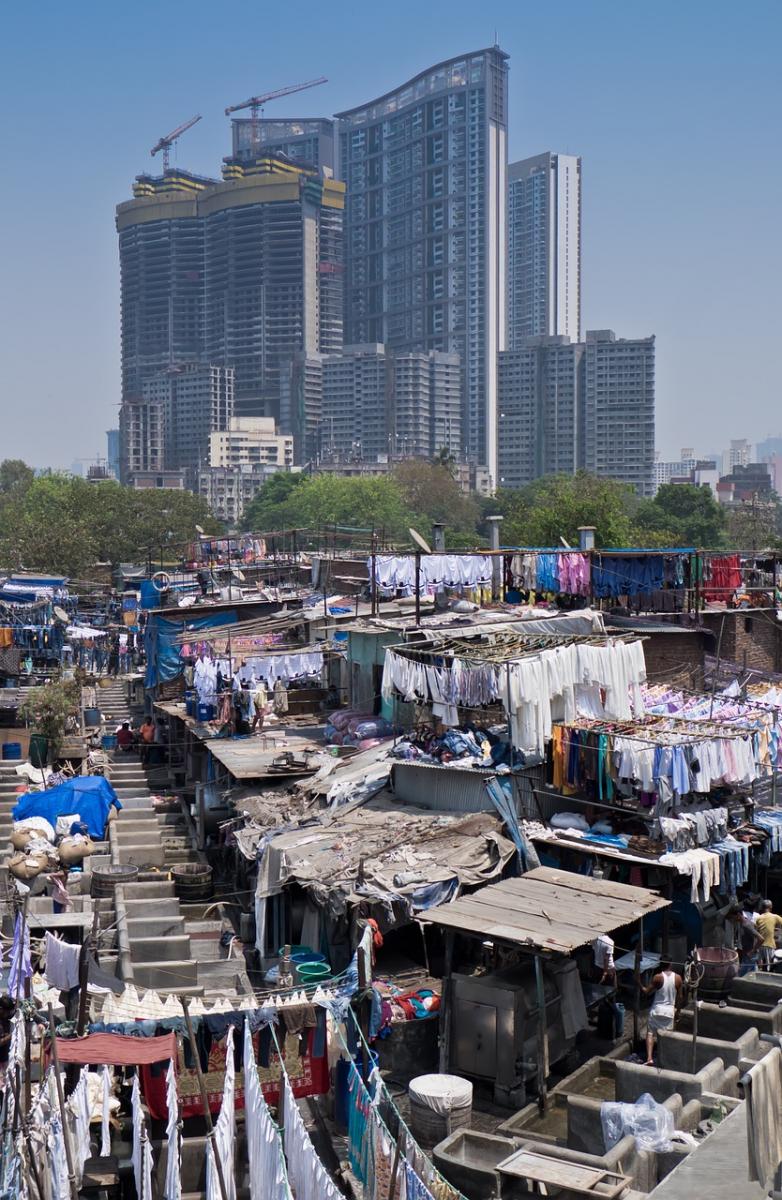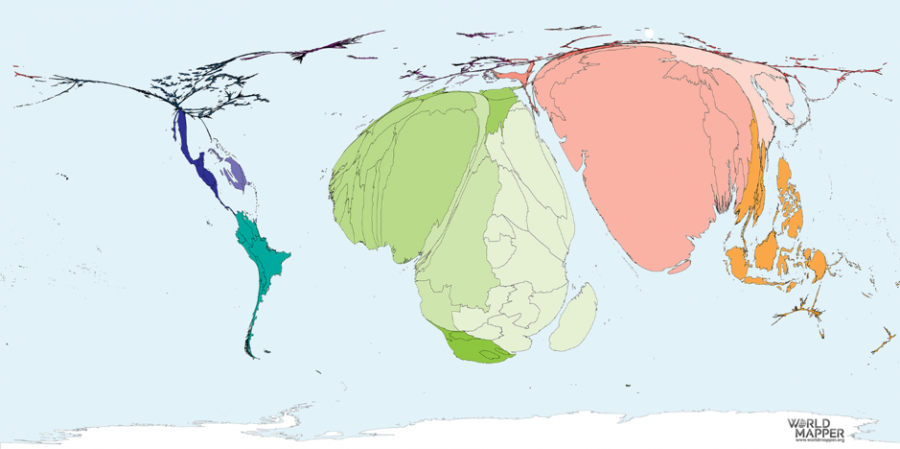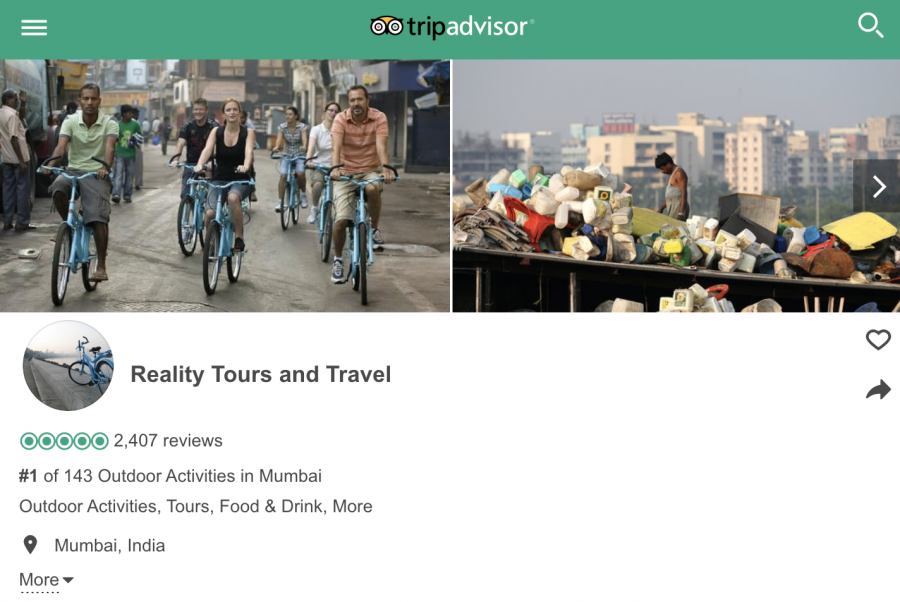
The controversial dilemma's of slum tourism
Increasingly, travelers want to see more of the world, explore local cultures and live the ‘real experience’, even drawing them towards underdeveloped marginalized areas. However, not only travelers but also locals are highly affected by this practice known as global slumming or slum tourism.
Slum tourism: getting the real experience, but at what cost?
In this article ’slum tourism’ will be looked at in more detail. The United Nations (2016) has defined slum tourism as a touristic practice which happens in places in which the residential status of people is insecure, with no legal right to property and inadequate access to water and sanitation because of poor housing and overcrowding. This practise is also known as poverty tourism, as it drives tourists to underdeveloped areas and people living in extreme poverty. Why is slum tourism often considered to be controversial? And what are its positive and negative consequences? Even though it is not a new concept, over the last couple of years tourists have increasingly been seeking new experiences to explore different parts of the world. As a result of globalization and specific infrastructures becoming more accessible, visiting remote marginal areas in the world has become easier. Tourism lives on what is different, making it more appealing for travelers to visit developing countries. i.e. countries located in what is now termed the Global South, in order to explore these underdeveloped areas.
While tourists often seek an eye-opening experience, it is also to be questioned what is the effect of this poverty tourism on the peripheral areas in which it takes place. In order to discover this, we need to consider what drives people to seek these unordinary experiences. Is it a form of exploitation or can it also lead to economic benefits, since it is often one of the only forms of economic activity available for these marginalized areas?
So, why do people visit countries to stare at people living in some of the poorest and most underdeveloped regions? Does it educate them about poverty? Do they enjoy the adrenaline that comes with it? Do they think their visit contributes to the economic resources of the areas? Let's first have a look at how it all started.
How did we get here?
Slum tourism started in the 19th century in London (National Geographic, 2018). In the Victorian era, London rapidly grew due to economic welfare, resulting in a geographic division based on social classes (Steinbrink, 2012). As a result, inhabitants of the city did not feel like they knew their city anymore, and the towns located in the East End quickly became known as dark abysses, places that were about to reach a bottomless pit (Steinbrink, 2012). Soon enough, people from the center of London started going on social expeditions to marginalized areas within their own city, also known as peripheries. Not long after, this form of tourism started to attract more attention, and different countries, such as the United States, in the 1880's started to adopt the trend in London. The image below shows a newspaper article published inthe New York Times, in which slumming is described as the latest fashion, resulting in a rapid expansionof this specific type of tourism. It demonstrates the culturalization of poverty within marginalized areas and how it reaches special significance in slum tourism.

Slumming in this town (Steinbrink, 2012)
It started small, but nowadays in some countries or continents it can even be seen as a highly professionalized business (Steinbrink, 2012). A specific example is Asia, and more specifically India, where slum tourism is rapidly increasing. One of the driving forces of this development is the media attention surrounding the movie Slumdog Millionaire, which premiered in 2008, taking a perspective on Dharavi, one of the largest slums in the world located in Mumbai. The slum gained a lot of attention for after he Hollywood movie won eight Oscar awards, resulting in large streams of tourism towards the underdeveloped area. Dharavi is now half the size of Central Park in New York with almost half a million people living in spaces smaller than ten square meters (Nisbett, 2017).
Simultaneously, as this touristic trend kept growing, more tour operators started offering ‘slum tours’ or even ‘poverty tours’ to show outsiders, often western visitors, the real face of marginalized and impoverished areas (National Geographic, 2018). This led to the phenomenon as it has become today, resulting in discussions about how this affects the marginalized areas; can it be seen as human exploitation or economically beneficial? Even though slum tourism has been around for a while now, academic research on it is relatively scarce (Nisbett, 2017).
Poverty porn
Offering tours that take you to look at the poorest of the poor during your holiday is also known as voyeurism. Critics say the tours are exploitative and it takes the ethics out of travelling (New York Times, 2008). How would you feel if outsiders came to your house multiple times a day, staring at you and taking photos? Another, somewhat extreme expression used to describe this phenomenon is poverty porn, a term that is used to draw attention to the issue which commodifies humans living in extreme poverty at the margins as a way to entertain the privileged often living at thecenter.
How would you feel if outsiders came to your house multiple times a day, staring at you and taking photos?
An example is people sharing their life-changing slum toursim experience on the internet, showing how it affects them, for example by writing blogs about it or even sharing a personal experience in a vlog. This vlog in particularshows life in the Dharavi slum which became well-known from the Slumdog Millionaire movie.

Slum in Mumbai, India
This exotic type of poverty can be seen as a form of romanticizing, making it seem like an authentic experience which will enrich you and broaden your perspective of the world. Travelers describe their visits to slums as 'life-changing', 'mind-blowing' and even 'enriching'. However, what does this do to those living in these peripheral areas, also known as slum-dwellers, living across the globe?
Travelers describe their visits to slums as 'life-changing', 'mind-blowing' and even 'enriching'.
Trying to find the real authentic experience might also draw people to the townships in South Africa where travelers have been trying to find the culture of locals ever since the end of the apartheid (Steinbrink, 2012). However, how this affects those living in these marginalized areas often stays unknown, since often only the perspective of travelers reaches the media. Slowly, media is more often trying to represent the local perspective on the internet and recently Comedy Central published a video in which locals from Laga Township in South Africa got the chance to speak up about this, as they called it, 'unfortunate trend'.
Where the money goes
But is it all that bad? Does the money end up only with tour companies offering slum tours? Or maybe with the government? Who are the ones that profit from this type of tourism? Does slum tourism just make travelers feel better about themselves or do communities profit from it as well?
Does slum tourism just make travelers feel better about themselves or do communities profit from it as well?
Countries in the Global South have increasingly developed large-scale mass tourism, making these countries economically dependent on the tourism market. This is often characterized by foreign dominance controlling the tourism sector (Khan, 1997). A way of looking at this development is by considering Wallerstein's (2004) world-systems analysis. A world system is characterized by a division of labor within a large geographical zone in which there is a significant flow of goods, capital and labor (Wallerstein, 2004). In the case of slum tourism, it is the division of labor, as the profits that are made are a result of tourism. The tourism is provided by the centers, well established and often western countries and this tourism is dependent on the peripheral areas that can (involuntarily) be considered to be the tourist attraction.
Nowadays, about 30% of the urban population is living in slums on less than $1.90 a day (United Nations, 2016; World Bank, 2019), the urban population is defined as the population inhabiting areas that tend to have a larger population density. The map below enlarges the countries living in extreme poverty across the globe. Strong states contain a disproportionate and often large share of core processes. This is the opposite of weak states which contain an unequal share of peripheral production processes. This often puts them in a position in which they are forced to accept their position as they are controlled by strong states, also known as centers (Wallerstein, 2004).
The world system analysis represents the dependency of peripheries on these centers. As long as tourists keep visiting the rural areas, which are located outside or even within centers, they are unable to change the axial division of processes (Wallerstein, 2004). In order for this dependency to be maintained, there are semi-peripheral areas involved which facilitate tourism flows, but those often only receive a small share of the profits that are made. An example of this are tours offered by tour operators in large cities such as Mumbai. These tours offer foreigners or even locals from the center of Mumbai the experience of visiting peripheral areas which could be located at the margins of these large cities such as Dharavi, the largest slum in Mumbai. It is important to be aware of the fact that centers, semi-peripheries and peripheries are relative and can thus change per context. Peripheries, in fact, can also be located within centers such as in London, where in the 19th century locals visited unexplored areas in their own city.

Countries of absolute poverty
Nowadays, over 30% of the urban population is living in slums on less than $1.90 a day.
As an example, local tour operators in the Dharavi slums in Mumbai, India have emphasized the annual turnover of $665 million produced within the tourism industry of the slums (Nisbett, 2017). However, if this entire amount were to be shared withthe peripheries, more concretely the Mumbai slums, living and health circumstances would probably be better than they currently are.
However, there are some financial benefits for the locals, since they often receive a small share for their participation, even though it might not be voluntarily as the tourism industry is often controlled by centers: forexample the international arrivals to townships in South Africa rose from 3.6 million in 1994 to 9.1 million in 2007, rapidly increasing tourism and simultaneously benefiting the economy (Steinbrink, 2012).
There are however slum tourism companies that do give back, often a small percentage, to support health and education of local inhabitants. Additionally, due to the increase of tourism, authorities such as governments might become more willing to invest money in improving local infrastructures which will in the long run be beneficial for residents of the slums as well (Parker, 2019). This idea sounds good, however there is little evidence yet about to what extent this is actually happening or if it is just a promise made by tour companies to make travelers feel less guilty about having a look at those living in poverty.
It is important to keep in mind that the centers and peripheries are very much dependent on each other, slum tourism would not exist as a modern world system if the two didn't support each other.
Awareness creation
On the one hand, capitalist tourism lead to countries that are making rural areas dependent upon them and not being able to be self-generating when it comes to tourism. This results in economic benefit for the western countries as opposed to countries in the Global South. On the other hand, regardless of the unequal division of economic benefits, there are tourism companies that claim to be beneficial for the locals.
An example of the latter is the organization Smokey Tours, a non-governmental organization which claims to give back 100% of the profits to the locals and involve the locals in the business by having them give the tours to the visitors. Additionally, tourists are not allowed to take photos or make videos. The organization claims that “It is about bringing worlds together and believing and trusting that everyone will do their part'' (Alcoseba Fernandez, 2019). This is similar to Reality Tours, operating in Dharavi in Mumbai and donating 80% of the profits to local NGO's. These tours are often positively rated, with Reality Tours receiving an excellent rating of 48% and a very good rating of 45% (Nisbett, 2017). However, when looking specifically at the comments, travelers deny calling it a slum tour and focus on the commercial side of the tour, neglecting the fact that these are real people living in poverty (Nisbett, 2017).

Reality Tours on TripAdvisor
This shift to centers sharing financial benefits with peripheries is progress for the slum tourism world, however, the moral dilemma still remains . Regardless of the fact that it may create awareness about the issue, it is still happening, and it can often still be considered as dehumanizing for locals (Alcoseba Fernandez, 2019). A way to stop seeing people in marginalized areas as objects is to not only see them living in poverty but by actually giving them voice and the (financial) opportunity to create better lives for themselves. As a result of this, tours can start focusing on showing the development of locals instead of just observing their current poor situation.
So, am I a slum tourist...?
After reading this article, you might wonder... am I a slum tourist myself? The answer to this question very much depends on your perspective on things and the way you participate in the tourism of a specific area. To be safe, in order to avoid slum tourism, it is important to do some thorough research before you plan your trip to peripheral areas.
Make sure you know who are involved in organizing the trips, where your money will go to and to what extent the activities you are planning are ethical and respectful oflocals. Another important factor is travelling in small groups to decrease disruption to people's daily lives. Whilst there is a thin line between exploration and exploitation, this does not mean that you should necessarily avoid finding out where this line lies. Find evidence of successful projects that have been supported by donations of tours and try to avoid solely watching those in poverty. Give them a voice in order to actually understand locals' perspectives and lifestyles.
There is a thin line between exploration and exploitation.
Slum tourism will always remain an ethical dilemma, but in order to create your own perspective on it, you might want to start by asking yourself if you are better off safely staying inside your resort, acting like you do not know what is happening right outside of your hotel, or if facing reality can increase awareness of something that is the hard reality for almost a quarter of the world population.
References
Alcoseba Fernandez, H. (2019, March 20). Do slum tours really benefit the poor? Eco-Business.
Khan, M.M. (1997). Tourism Development and Dependency Theory: Mass Tourism vs. Ecotourism. Research Notes and Reports. USA: Virginia Polytechnic Institute & State University.
National Geographic (2018). Inside the Controversial World of Slum Tourism.
Nisbett, M. (2017). Empowering the empowered? Slum tourism and the depoliticization of poverty. Geoforum. 85(1), pp.37-45.
Parker, E. (2019, May 10). Slum tourism: Sightseeing with a social message - Navigating a moral dilemma. The Monsoon Project.
Steinbrink, M., (2012). 'We did the slum!' - Urban Poverty Tourism in Historical Perspective. Tourism Geographies: An International Journal of Tourism, Space and Environment.
The World Bank Group (2019). Poverty headcount ratio at $1.90 a day.
United Nations (2016). Urbanization and Development: Emerging Futures. World Cities Report 2016. Nairobi, Kenia: United Nations Human Settlements Programme (UN-Habitat).
Wallerstein, I. (2004). World-System Analysis: An Introduction. Durham and London: Duke University Press.
Weiner, E (2008, March 9) Slum Visits: Tourism or Voyeurism? The New York Times.